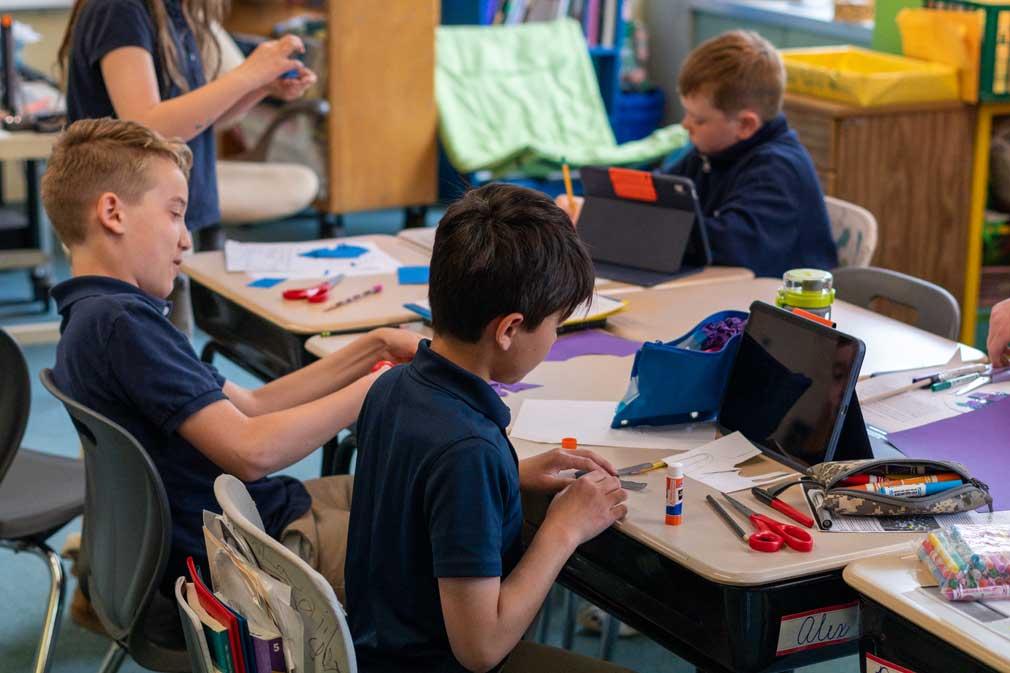Michigan Legislature Approves Budget Supporting $40M For Non-Public Schools
This amounts to approximately $400 per child of the 100,000+ currently enrolled in non-public schools.

A school spending budget approved by the House this week would set aside a dedicated $40 million for nonpublic schools across Michigan to pay for school safety improvements, healthy meals for children, student teachers, and other support services permitted by the state constitution.
The House-approved budget would combine most of the various funding items that Michigan Catholic Conference (MCC) and the Michigan Association of Nonpublic Schools (MANS) have worked to have included in the state budget over the years into one section.
The idea behind this approach is to allow nonpublic schools to access the funding on a per-pupil basis—about $400 per child—and use it as each individual school deems necessary, within the parameters spelled out in the budget.
Instead of a nonpublic school having a certain amount of funding for only safety improvements and a certain amount only for robotics funding, it could dedicate its allotment completely to school safety, or completely to robotics, for example.
The House-proposed budget would differ from past years, however, in that nonpublic schools could also use the funding to expand access to free breakfasts and lunches for their students, or arrange for support of student teachers who teach in nonpublic buildings. MCC and MANS have been advocating for nonpublic schools to be included in each of these respective state programs for years.
Another new provision nonpublic schools could apply the funding to is professional development for teachers to improve literacy learning.
Allowable uses of the money further include school safety improvements, mental health services, and support of nonpublic students’ participation in robotics programs and competitions. These are funding items that nonpublic schools have received in this current budget year as well as previous budget years, as approved by both the Legislature and Governor.
It is also important to note that these funding provisions would not violate the state constitution, because the funds do not specifically support “the attendance of any student or the employment of any person at any such nonpublic school,” as stated in the constitution.
For instance, in the case of the student teacher stipend program, the payments made to support those individuals student-teaching in nonpublic schools would be made directly to the higher education institution that they are enrolled at.
In other budgetary provisions pertaining to nonpublic education, the House spending plan keeps a $3.5 million appropriation to support dual enrollment opportunities that allow nonpublic school students to enroll in and benefit from college credits.
A $1.5 million provision to reimburse nonpublic schools for the cost of complying with state mandates related to health and safety regulations would also stay intact in the House budget.
Finally, the House budget would remove a cap on the growth of shared time services, which allow nonpublic school students to enroll in elective courses provided by public schools, which at the same time generates additional funding for public schools. This educational partnership has been in place for decades.
For public education, the House proposed more than $12,000 per pupil in aid, with roughly $2,000 of that amount intended to provide similar flexibility to school districts to spend as they choose. Before, funding was allocated into different funding pots with specific purposes.
These spending provisions along with the rest of the House’s education budget cleared two committees and the full House chamber this week, setting up negotiations between the House, Senate and Governor’s office. All three parties have now formally put forward a school spending plan for the fiscal year that begins October 1.
Both the Senate and Governor proposals provide no support for nonpublic schools.